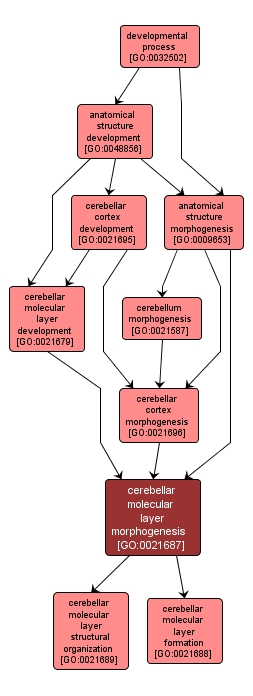| Desc: |
The process by which the anatomical structure of the cerebellar molecular layer is generated and organized. Morphogenesis pertains to the creation of form. The molecular layer is the outermost layer of the cerebellar cortex. It contains the parallel fibers of the granule cells, interneurons such as stellate and basket cells, and the dendrites of the underlying Purkinje cells. |














